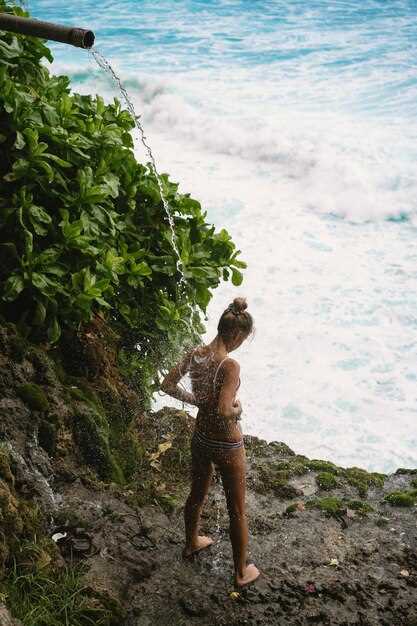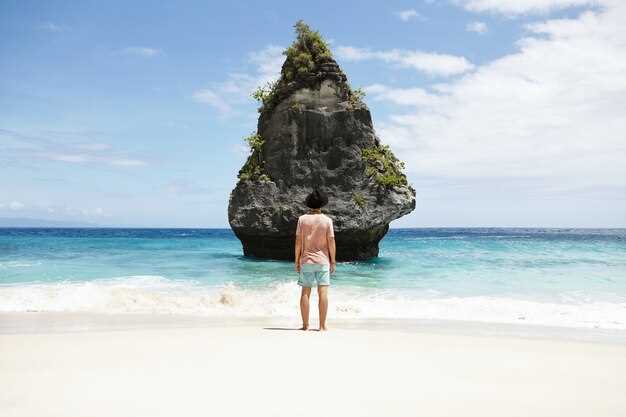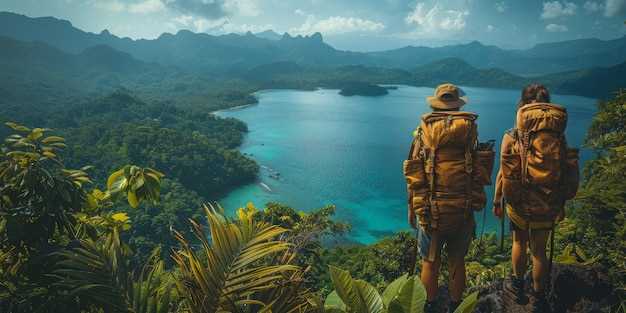Plan a five-day, budget-friendly island-hopping itinerary that starts with a flight to Sorong and a fast boat to Waigeo. Just enough time to set a relaxing rhythm, with two nights on the eastern cluster and two days of boat-based exploring. Expect clear waters, dramatic karst peaks, and plenty of snorkeling opportunities to fill your days.
Accommodations range from budget guesthouses to midrange hotels; plan two-night stays on Waigeo and one-night stops on smaller islets. For accommodations budgets, expect about $40-70 per night in basic guesthouses and $120-180 for midrange properties; if you want perfect balance, distribute stays so you can start mornings with reef snorkeling and finish with sunset relaxations. Creating memories comes from pairing activity with rest, and leaving a little flexibility in your days allows you to adjust to seas and wind. Budget-conscious travelers should leave worry behind by choosing reliable operators and clear terms.
Getting there remains straightforward: fly into Sorong and take a relaxing speedboat to the eastern archipelago. The east coast offers more sheltered waters for your island-hopping rhythm. Day-by-day plan keeps you moving without rushing: Day 1 arrives in Sorong, Day 2–3 hop between Waigeo, Batanta, and Gam Island, with stops for relaxing beach moments and short hikes to viewpoints. Day 4 heads to Misool’s quieter coves for wildlife sightings and sheltered lagoons; Day 5 returns to Sorong for departure. If you want to slow down, stretch the plan to six days and add a paddling tour or a sea-kayak evening in the east bays. A kali day-trip adds a taste of unspoiled coves.
Getting there and moving between islands is easiest with a reputable operator. To leave worry behind, book a packaged option with clear cancellation terms and on-water safety. For budget travelers, book ahead, compare local agencies, and use group tours to keep costs down; bring cash since remote docks accept few cards. Pack rash guards, a lightweight rain jacket, a dry bag, and bringing a reusable bottle helps reduce waste across the archipelago.
We ourselves should respect local customs and contribute to conservation by choosing community-run lodges and supporting environmental fees. Creating lasting memories happens when you balance active reef days with calm evenings. If you fly from bali, plan a multi-stop itinerary that connects flights with the east routes. bringing a reusable bottle and other reusables helps reduce waste across the archipelago, especially on kali island groups where boats stop briefly. For kali and other eastern islets, seek simple, low-impact experiences that leave a light footprint while delivering authentic encounters.
Categories
Choose accommodation with private balconies and quiet corners to maximize privacy and minimize noise after a long day on the islands.
- Accommodation
- Options span high-end overwater lodges to nice budget homestays along river banks; completely private rooms with a deck are common in the best picks.
- Booking tips: reserve 60–90 days ahead in high season; compare offers from multiple operators; read cancellation terms to avoid worry.
- Prices: budget stays from 50–80 USD per night; standard lodges 120–180 USD; marine-focused retreats run 250 USD and up, often with included snorkeling or diving.
- Privacy: look for rooms with solid walls, a private terrace, and limited shared spaces so evenings remain peaceful.
- štatistické data show that guests staying at smaller properties report higher satisfaction and better sleep quality.
- When you plan, use the booking portal to compare offers and secure your stay.
- Marine life and activities
- From snorkeling to diving, you can see mantas, reef sharks, and a kaleidoscope of coral; operators offers day trips to top reefs with seasoned guides.
- Completely safe gear and briefings matter; choose operators that supply high-quality equipment and experienced crew.
- Anything you want to see underwater, you’ll often find a route with moderate currents and clear water; peak visibility tends to be April–November.
- When you book, ask for a plan that minimizes crowding at hotspots and preserves marine life.
- Village life along river
- Stay with a family and join local routines to learn about rufas weaving and village meals; účely of these visits center on cultural exchange and support for the community.
- Privacy varies by property; pick a small homestay that offers a private veranda and daytime quiet by the river.
- Economy: booking through local operators helps keep more travel dollars in the community rather than abroad.
- Booking and value
- Compare three offers before confirming; check guest reviews for cleanliness, service, and reliability.
- Economy options exist without compromising safety; verify air-conditioning, hot water, and functional Wi‑Fi when needed.
- Cancellation windows and flexibility matter if weather or flight plans shift; choose terms that suit your dates.
- Evening experiences and local crafts
- Evening markets by the pier showcase rufas and other crafts; you can join a short weaving workshop for a nice takeaway.
- Sunset cruises and stargazing are popular; experts run guided sessions that fill quickly–book early.
- When options are taken, try a smaller boat or a village-run program for a more intimate view.
Top dive and snorkeling sites by accessibility

Start with pasir islets for the easiest access. A quick 15-20 minute boat ride from Arborek or Waisai puts you into shallow, calm water ideal for snorkelers of all levels. A glance at the surface shows white sand, turquoise water, and a carpet of small reef fish. This setting is surrounded by tiny islets and a gentle breeze, that makes for a smooth welcome to Raja Ampat’s beauty. If you arrived this year with family, spend 40-60 minutes here and decide for ourselves which destinations to visit next.
From pasir islets, swing to Arborek’s reef, a gentle, accessible option with typical visibility of 8-15 m in the morning and mild currents. The area is surrounded by mangroves and the houses on stilts give a real sense of life here. Birds wheel overhead while you float above the soft corals, and they or the boat traffic pass by. For families and first-timers, this works nicely, with extra room to pause for a picture or to address problems you might worry about. One účastník in our group even noted how easy it was to relax here and share a shot on instagram.
Next, Cape Kri offers a richer palette of life for snorkelers who want more variety. Currents can be stronger, so choose a calm morning window or visit with a guide who knows the channels. Large schools of fusiliers, snappers, and reef fish swirl by, and you may spot reef sharks in calmer pockets. The site is a popular destinations for many planners, so book ahead and decide for yourselves which routes to take, tasting the reef’s colors as you go. This variation keeps your glance shifting from one school to another, and you’ll leave with a real sense of how the sea surrounds this region.
Manta Sandy is a classic for manta sightings while staying close to home, reachable by fast boat early in the day. A quick glance around confirms clear water, then you drift with the current in search of the graceful rays that circle the cleaning stations. The site is surrounded by open sea, and mantas typically approach snorkelers who keep their distance and follow the guide’s instructions. Some participants, účastník among them, log an instagram post with a dramatic shot of a manta gliding by, a reminder of the beauty that Raja Ampat holds for locals and travelers alike.
Piaynemo’s islets offer a final, reliable stop for the day. The channels between islets stay calm even when the open sea gets busy, making it a good end-point. You can catch a quick glance of the mosaic of houses on stilts and the birds above as you float over turquoise water and coral gardens. If you want extra variety, pair a short stop here with a sunset cruise, or else head back to your base. Spend time here to picture the memories and share them on instagram to remember this year.
When to visit: optimal seasons, tides, and wildlife activity
Plan a May–September trip for calm seas, high visibility, and reliable wildlife activity in the ampat archipelago; liveaboards fill fast and boats are often booked solid, so secure your arrangements early to avoid problems.
Expect water temperatures around 27–30°C and air around 28–32°C; visibility commonly ranges 20–40 meters, with the clearest days in May–August. These conditions let you travel comfortably, rest between snorkelling sessions, and enjoy relaxing time with the people you travel with. Mornings are usually calmer, and while the seas stay green and inviting, the dry season generally offers the most predictable snorkelling and light winds for itineraries that include multiple sites in a single day.
tides and currents flow on a regular two-tide cycle; slack water around mid-tide yields the gentlest snorkelling in reef lagoons, while stronger transitions attract pelagic life and vibrant reef activity. For easier drift snorkelling on exposed reefs, align trips with neap tides when possible, and use mid- to low-tide windows to access shallow flats without heavy surge. For a balanced experience, combine calm mornings with late-afternoon sessions when winds ease and visibility holds steady, increasing chances of seeing schools and curious fish on each ampats route.
Dawn and dusk bring the richest wildlife displays on reef walls and in shallow bays; manta rays and large pelagics often move along current channels during the wet season, while macro life, nudibranchs, and critters thrive in mangrove-adjacent habitats during transitional months. Check the viewpoint from your liveaboard or a shore vantage to compare sites and plan logical, time-efficient routes, especially if you’re traveling with a smaller crew or choosing a home base that creates fewer back-and-forth movements. (účastník) for travelers who want a clear sense of how conditions shift by site and season, helping you avoid problems and keep a smooth schedule as you explore ampat and ampats’ channels.
| Season | Conditions | Wildlife & Snorkelling Outlook | Recommended Activities |
|---|---|---|---|
| Dry season (May–Sept) | Clear water, light to moderate winds, visibility 25–40 m, water 27–30°C | Most reliable reef fish sightings; mantas and pelagics frequent current lines | Liveaboards, multiple site snorkelling, coastal viewpoints |
| Transition months (Apr, Oct) | Variable winds, occasional showers, moderate sea state | Plankton blooms in some areas boost macro life | Photography sessions, flexible itineraries |
| Wet season (Nov–Mar) | Higher rainfall, stronger swells on exposed sites, good post-storm clarity | Macro life shines; nudibranchs, rare critters, active reef silhouettes | Drift snorkelling, sheltered bays, shorter hops between sites |
Permits, regulations, and reef-safe travel tips
Get your permits before you travel to Raja Ampat. The raja Ampat Marine Protected Area requires two main fees per visitor: a marine park entry permit and a local community fee. The total cost varies by season, but you should expect approximately a few hundred thousand IDR per person per day. Your guide or a registered tour operator can arrange these in advance, saving time on arrival. The people here value conservation, and permits support life beneath the water and the communities that protect it.
Besides, buy through the official stránke or at designated desks on arrival, and confirm the exact amounts with staff. predvoľby of local communities guide what is allowed on reefs, and your guide can advise where photography and snorkeling are permitted. Speak with your hotel or operator to lock in permits early; just this step must occur before you head out for the day. Nothing should disrupt your plan if you follow official guidance below and ask questions when something seems unclear.
Regulations you must follow include no touching corals, no collecting shells, and no feeding wildlife. Use licensed operators for boats and dives, stay with your guide at sensitive sites, and respect drone-permit rules if you plan to film. Watching your buoyancy and keeping a safe distance from marine life helps protect life below the surface and minimize problems for reef ecosystems.
Reef-safe travel tips: apply reef-safe sunscreen with mineral filters, avoid aerosol products, and carry a reusable bottle to reduce plastic. Choose hotels with strong sustainability policies and support local life by buying from community-based enterprises. Speak with predvoľby about access to beaches and reef habitats, and keep things respectful. Tasty seafood can be enjoyed when sourced from responsible fisheries; always confirm origin with your restaurant partner.
below are practical reminders: early planning, total respect for local guidelines, and careful gear choices keep things simple and enjoyable. The experience in beautiful raja waters rewards travelers who watch the reef, speak with locals, and follow the rules. Approximately, permits, travel time, and on-site conduct determine how smooth your visit will be.
Where to stay: choosing eco-friendly lodges and budget options
Choose eco-friendly lodges that use solar power and local materials. This smart approach limits waste, supports communities, and keeps reefs healthy while you travel right. There, dense jungle scenery and close-to-water access blend comfort with adventure, so you can explore without leaving a big footprint.
Budget options include basic bungalows, simple guesthouses, and family-run homestays that put you closer to local life. Look for island-hopping packages that bundle transfers, meals, and snorkeling gear to reduce cost. If you’re traveling from Thailand, compare similar island options to gauge value, and head toward quieter coves rather than crowded resorts.
When you pick a stay, focus on care for the reef and the people who keep these places running. Seek simbul-styled lodges or jungle-friendly constructions that minimize ground impact and use raised platforms to protect the sand and mangroves. Travellers who explore from a central village save time and money, and choosing a room with basic comforts can be enough for a memorable visit. For anything you need, skip impulse buys and purchase only essentials.
Getting there and moving between islands: routes, transfers, and tips

Fly to Sorong (SOQ) from Jakarta, Bali, Makassar, or Manokwari and book a morning fast boat to Waisai; this combo is the most popular way to begin your Raja Ampat visit and works year round. The 2–3 hour crossing usually runs daily, weather permitting, and ashore time is predictable if you plan ahead. From Waisai, join a group transfer or hire a private boat to start island hops with everyone on board.
From Sorong you can reach Waigeo, Salawati, Batanta, and Misool by speedboat or charter. The Wayag area requires an early start and flexible timing, as tides and winds shape the route. Include the Penemu peninsula on day one for lagoons and a couple of tiny islets; many visitors add Misool and Batanta if they have two days. A 4–7 day loop provides a full spectrum of snorkeling, culture, and wildlife, truly showing why Asia’s last paradise is popular with visitors.
Transfers between islands rely on weather and boat availability. Most operators run morning departures with return by late afternoon; keep 2–4 hours of buffer between connections. Booking through your lodge or a licensed tour operator gives them the advantage of pre-arranged handoffs and local knowledge; a private charter offers total control over timing and can cover Waigeo, Misool, and Batanta in a single loop, with costs reflecting duration and boat size.
Packing and practical tips: reef-safe sunscreen, a light rain shell, a hat, dry bag, and cash in IDR. Data coverage is limited, so download information about stops and look up the day’s plan in advance. For snorkeling, bring a full-face mask if you want easier use; guides from Rufas communities can tailor a day to your interests, making every stop nice for everyone and close to shore; a quick look ashore reveals mangroves and small villages to explore. Since many visitors came here just to see wildlife and marine life, you’ll want to stay flexible and feel the pace of each island’s rhythm.
Bonus tip: travel in the dry season (May–Sept) for calmer seas; the basic rule is to book transfers 3–4 weeks in advance during peak months. The total travel time from Jakarta to your first island base, including a Sorong check-in, typically runs around 12–16 hours with connections. Head to the first lookout for a sunrise over Wayag to start your day with a true wow, and enjoy the advantage of a pre-arranged plan for snorkeling, island hopping, and unforgettable views just as you pictured.

 Welcome to Raja Ampat – Visiting Indonesia’s Last Paradise">
Welcome to Raja Ampat – Visiting Indonesia’s Last Paradise">